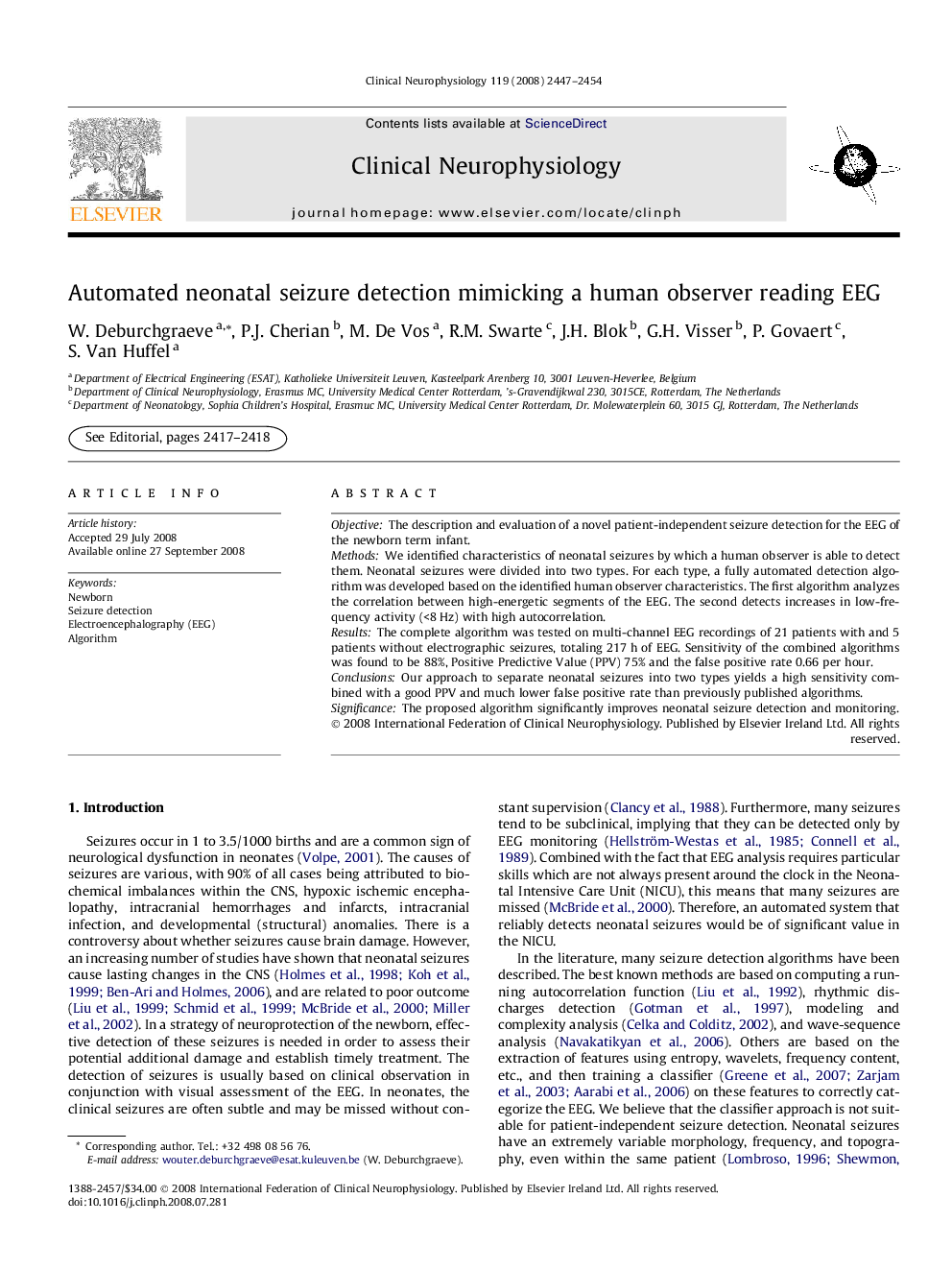| Article ID | Journal | Published Year | Pages | File Type |
|---|---|---|---|---|
| 3047003 | Clinical Neurophysiology | 2008 | 8 Pages |
ObjectiveThe description and evaluation of a novel patient-independent seizure detection for the EEG of the newborn term infant.MethodsWe identified characteristics of neonatal seizures by which a human observer is able to detect them. Neonatal seizures were divided into two types. For each type, a fully automated detection algorithm was developed based on the identified human observer characteristics. The first algorithm analyzes the correlation between high-energetic segments of the EEG. The second detects increases in low-frequency activity (<8 Hz) with high autocorrelation.ResultsThe complete algorithm was tested on multi-channel EEG recordings of 21 patients with and 5 patients without electrographic seizures, totaling 217 h of EEG. Sensitivity of the combined algorithms was found to be 88%, Positive Predictive Value (PPV) 75% and the false positive rate 0.66 per hour.ConclusionsOur approach to separate neonatal seizures into two types yields a high sensitivity combined with a good PPV and much lower false positive rate than previously published algorithms.SignificanceThe proposed algorithm significantly improves neonatal seizure detection and monitoring.
